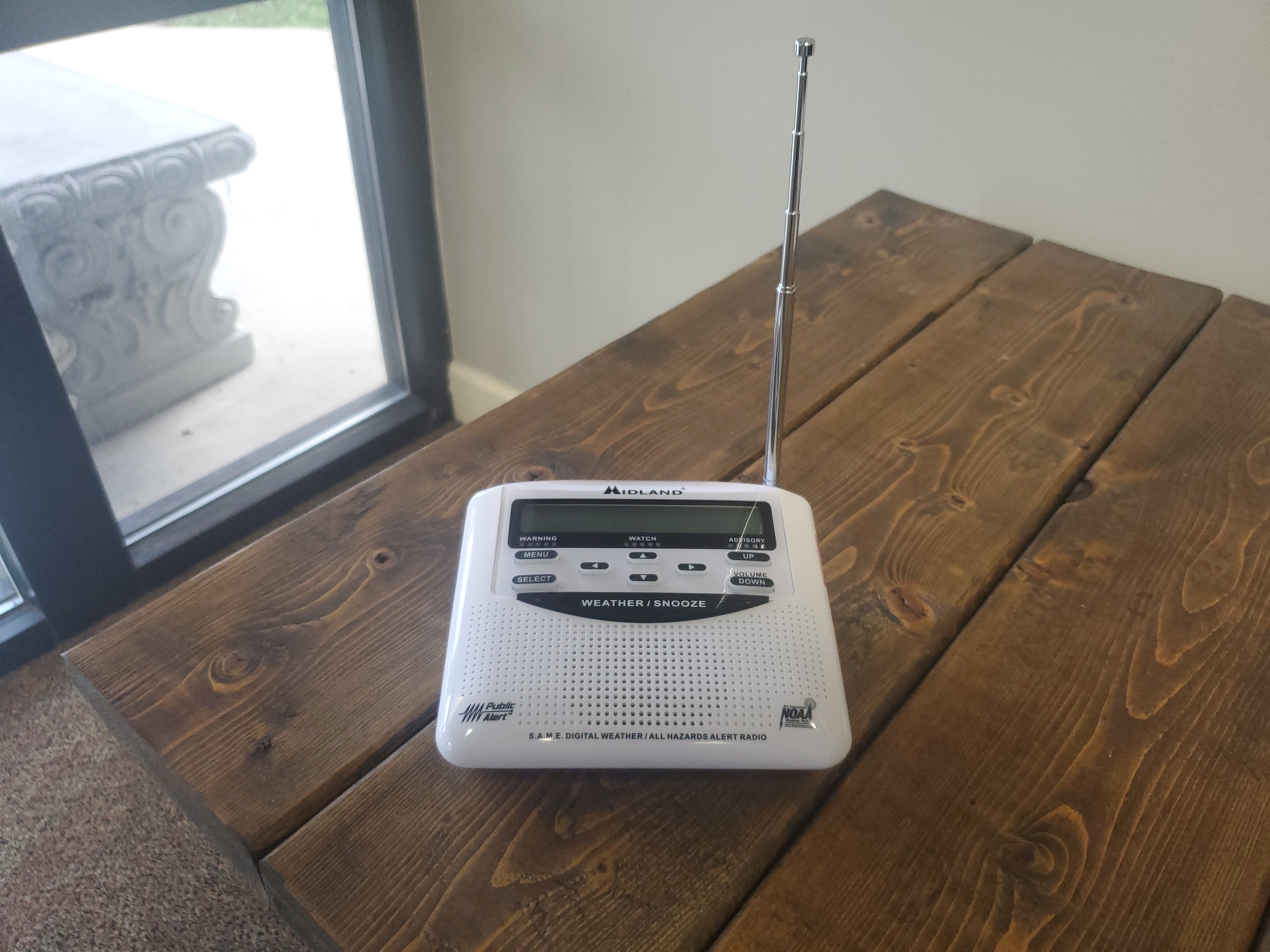Metcalfe County Weather Radios
In 2010, after an instance of severe flooding, Metcalfe County residents felt they were not sufficiently warned of the impending floods. The county has outdoor warning sirens, but even in ideal conditions they can only be heard for a half mile radius of the siren. So as an alternative, Metcalfe County Emergency Manager Emory Kidd explored getting a weather radio for every occupied structure in the county.

The Need for Weather Radios
In 2010, after an instance of severe flooding, Metcalfe County residents felt they were not sufficiently warned of the impending floods. The county has outdoor warning sirens, but even in ideal conditions they can only be heard for a half mile radius of the siren. Emory Kidd, the Emergency Manager for Metcalfe County, originally explored getting additional outdoor warning sirens that would cover the entire county, but the sheer cost of such an endeavor made that option unrealistic. To cover the entire County, it would take over $20 million. As an alternative, Kidd explored getting a weather radio for every occupied structure in Metcalfe County. In 2012, Metcalfe County put together a grant application asking for $274,000 in funds from the Federal Emergency Management Agency (FEMA). Unfortunately, the grant process is long, and rather slow.
Awarded in 2015, the FEMA grant provided 83% of the costs, leaving Metcalfe to provide 13% of the funds to purchase the weather radios. Instead of providing cash directly, Metcalfe County employees made-use of in-kind match options and handled the distribution of the weather radios. After receiving the radios from the Midland Radio Corporation, the county held an event on Saturday, May 9th, 2015 to distribute the radios to citizens who wanted one. The radios themselves come preprogrammed for tornadoes, but can be programmed to alert homeowners for many kinds of disasters. Amber Alerts can also be heard on the radios.
For new residents, or those who missed the initial distribution event, additional radios are put into a welcome basket that the chamber of commerce prepares for free. Some local insurance companies in Metcalfe also keep extra radios for new customers. Resident’s whose weather radios have been broken or damaged can also have them replaced.
roadbumps on the way to success
The project was not without its challenges, however. The radio signal that is used to alert citizens in Metcalfe did not originally reach all of Metcalfe County. FEMA requires somewhere around 70% of the county to be covered by the radio signals, and while the county is not currently at 100% coverage, they are working toward that goal. Kidd was able to use some of the FEMA grant money to buy repeaters to install around Metcalfe County. Kidd describes a repeater as, “When the [National Weather Service] NWS sends a signal out it comes over radio waves, like radio in your car. You know when you drive down the road listening to a station in Bowling Green? Then you pass a point and the station is gone? A repeater picks up the signal and sends it further.” The repeaters allowed Metcalfe to have 95% of the county covered by radio signals.
Nationally, all severe weather radio signals use one of seven radio signals (for more information visit NWR County Coverage Listing for Kentucky). A signal was not set aside for Metcalfe County before they received the radios from FEMA.
Radio channels are protected by the FCC, so getting permission to use a signal from the National Weather Service was a long process. A weather forecaster in Louisville, Kentucky aided Kidd in the process. After approval by the FCC, Metcalfe County Emergency Management has the exclusive permission to use the signal now designated for Metcalfe County.
Implementing a Similar Idea in your Own Community
-When asked, Kidd said about the project, “It’s a good project and I recommend any county to do it.”
On what the weather radios have done for Metcalfe County Kidd stated, “The community gets a win for them. A lot of people won’t go to Walmart and spend the $30-$40 to buy one. They can pick them up for free which is a win for them. For me, just knowing the citizens are a little better protected.”
To learn more about FEMA grant funds, and what opportunities exist for your community contact BRADD’s Disaster Resilience Coordinator Dajana Crockett at 270-781-2381 or email dajana.crockett@bradd.org.